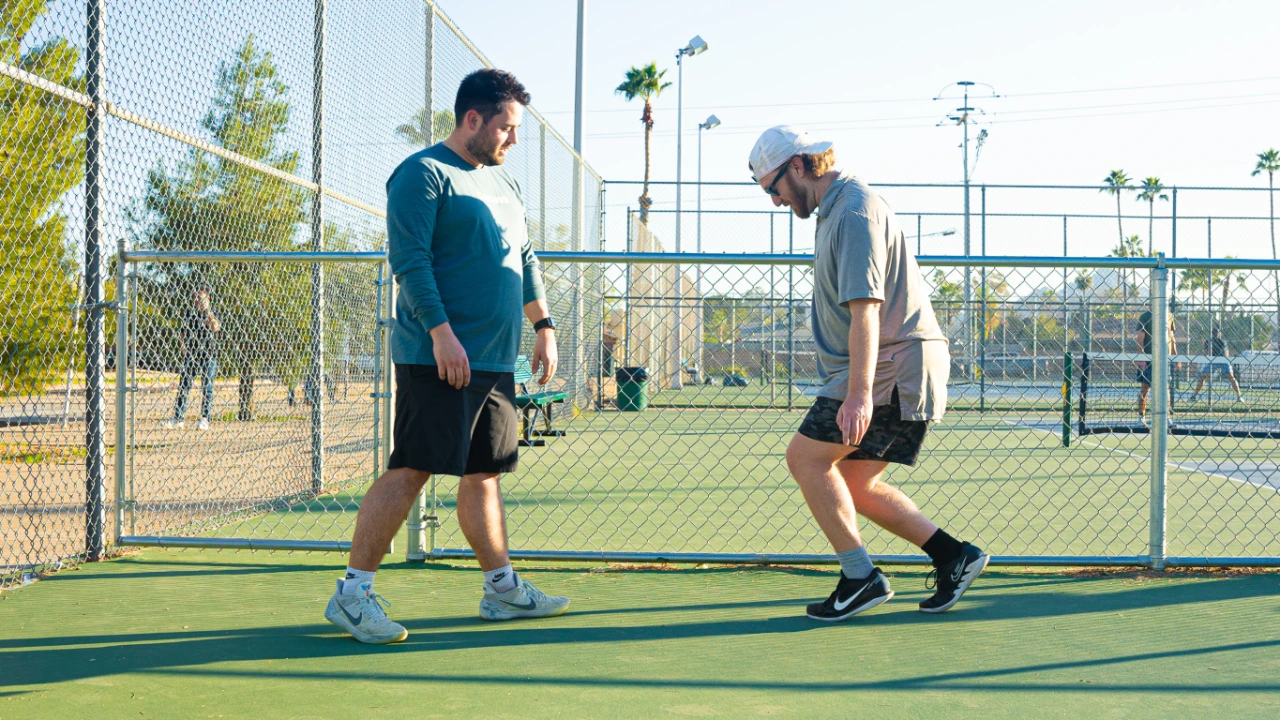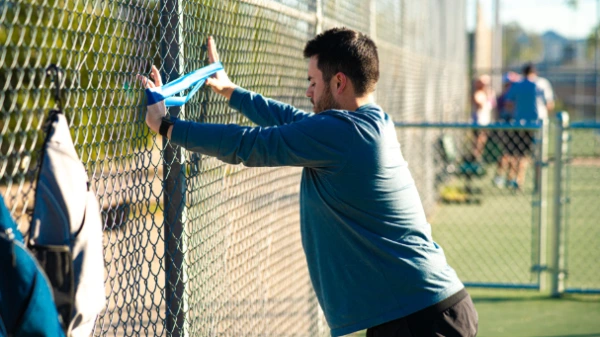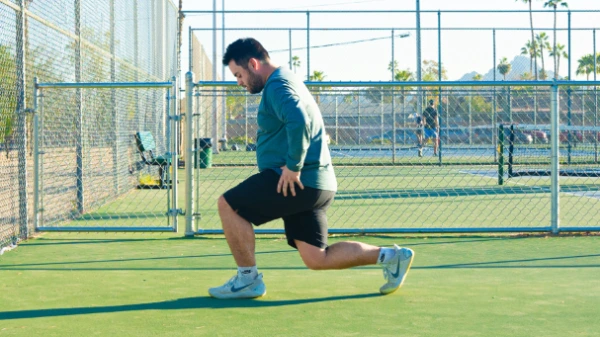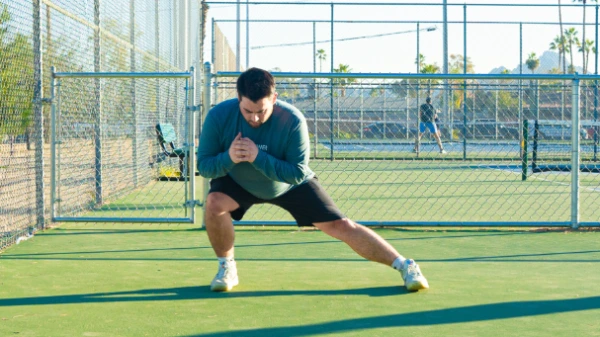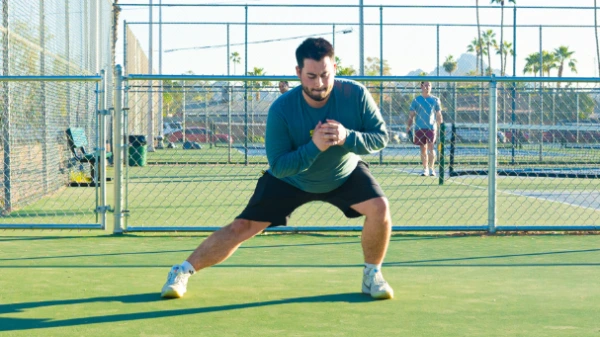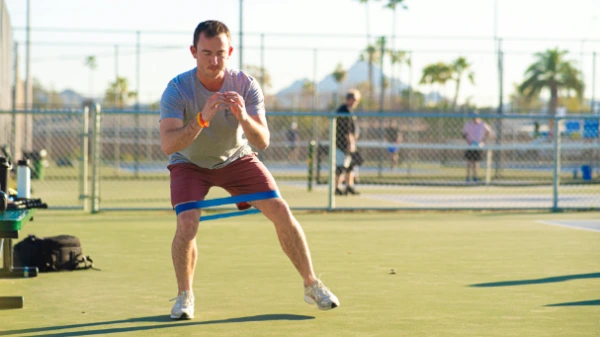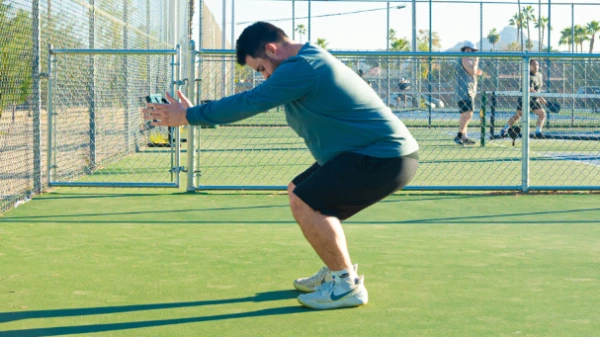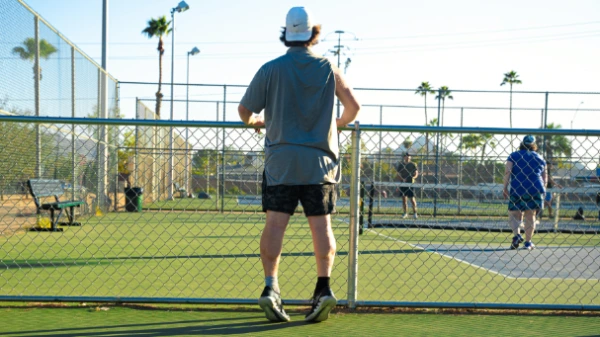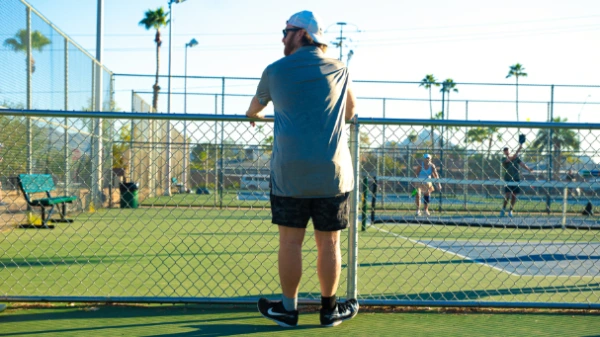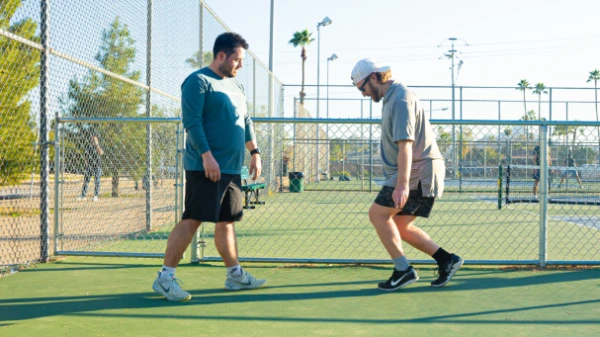By: Parker Hirsch, PT, DPT, FAS
Pickleball is gaining more and more popularity. And, as with any sport, injuries are on the rise.
It was estimated that Americans would spend up to $400 million in healthcare costs associated with a pickleball injury, and this cost is expected to rise as the sport gains popularity.
Pickleball requires you to start, stop, and cut abruptly throughout the game. You go from standing still to dynamically moving up and down the court at a moment’s notice.
Often, you are attempting to get into an optimal position that puts you at an advantage over your opponent. You may be sprinting up to the kitchen line or crouching down to hit a low ball or even reach up overhead.
All these movements are in reaction to how the ball is played, but, because each movement is abrupt, injuries can occur.
Common injuries in pickleball include:
- Achilles tendinopathy
- Ankle sprains
- Shoulder pains and strains
- Pickleball (tennis) elbow
- Glute and hip pain.
Lower extremity injuries, like ankle sprains, Achilles tendinopathy, and glute and hip pain, occur due to quick movements out of a stationary position. Overhead motions to hit the ball can lead to shoulder issues.
Many of these injuries occur because the body has not been trained or prepared for the sport’s demands. You may work a desk job that requires you to sit for long periods of time. Going from a sedentary position straight into a sport that requires quick, reactionary movements can put you at risk of an injury.
Mitigate Your Injury Risk
One tactic to mitigate your risk of injury during pickleball is to have a warm-up routine focusing on the sport’s demands.
Alongside a proper warm-up routine, training for your sport can help your body truly be prepared for play. Getting your shoulders, hips, and ankles ready for the court can not only help you move better, but it can also help you perform better.
Shoulder
Prone IYT
This movement helps to train portions of the trapezius muscle which is a powerful stabilizer of the scapulothoracic spine. Weakness along this muscle is also linked to shoulder pathology
Lat Pulldown
This is a great exercise that is available at any gym. This movement helps train the large latissimus dorsi muscle. This muscle not only helps you generate some power to your overhead smash, but also attaches into the spine making it a great “2 for 1” exercise!
Banded Wall Clocks
This is a great exercise to target the rotator cuff. As a dynamic stabilizer of the shoulder, the RTC is a vital muscle group to train and can help keep the shoulder healthy!
Hip
Lunge Matrix
Pickleball demands many different positions of our body. It is important to train the body to be ready for any position the sport may demand. This lunge matrix is a great way to train the body in 3 planes of motion to prepare you to get those difficult digs!
Lateral Band Walks
With the high demand of lateral movements pickleball demands it is crucial you get the lateral hip muscles strong! This easy exercise can be performed just about anywhere.
Squat
Squats are functional movements that are evident and applicable to pickleball. This exercise is important to train the entire lower extremity and will have you ready to stay up on the kitchen line for those long rallys!
Foot/Ankle
3 Way Calf Raises
A great exercise to train the gastrocnemius and soleus complex (triceps surae). One of the leading injuries in pickleball is Achilles tendinopathy and this is a great exercise to hedge risk for developing.
Heel Raise Isometrics
This is a favorite of mine for my athletes. This exercise involves isometric holds through the ankle challenging the endurance and stabilizers of the foot/ankle. A great exercise that can be performed anywhere and/or a variety of ways
Job Matrix
As mentioned above, pickleball places the body in a lot of positions, but also regularly from a relatively stationary position. This exercise helps challenge the body in 3 planes with plyometric stresses. Another great exercise to target many muscle groups and not just the foot/ankle.
PT for Pickleball
Spooner physical therapists can help you reduce your risk of injury and recover from a pickleball-induced injury.
No one is better for rehabbing your body than a physical therapist- especially if your PT understands the movements involved in the demands of your sport.
It is cheaper to work to mitigate injury risk than to work to recover from an injury, and a physical therapist can give you the tools to set you up for success.
Don’t wait until an injury sets you back – take proactive steps now to stay in peak condition, schedule an appointment today!

